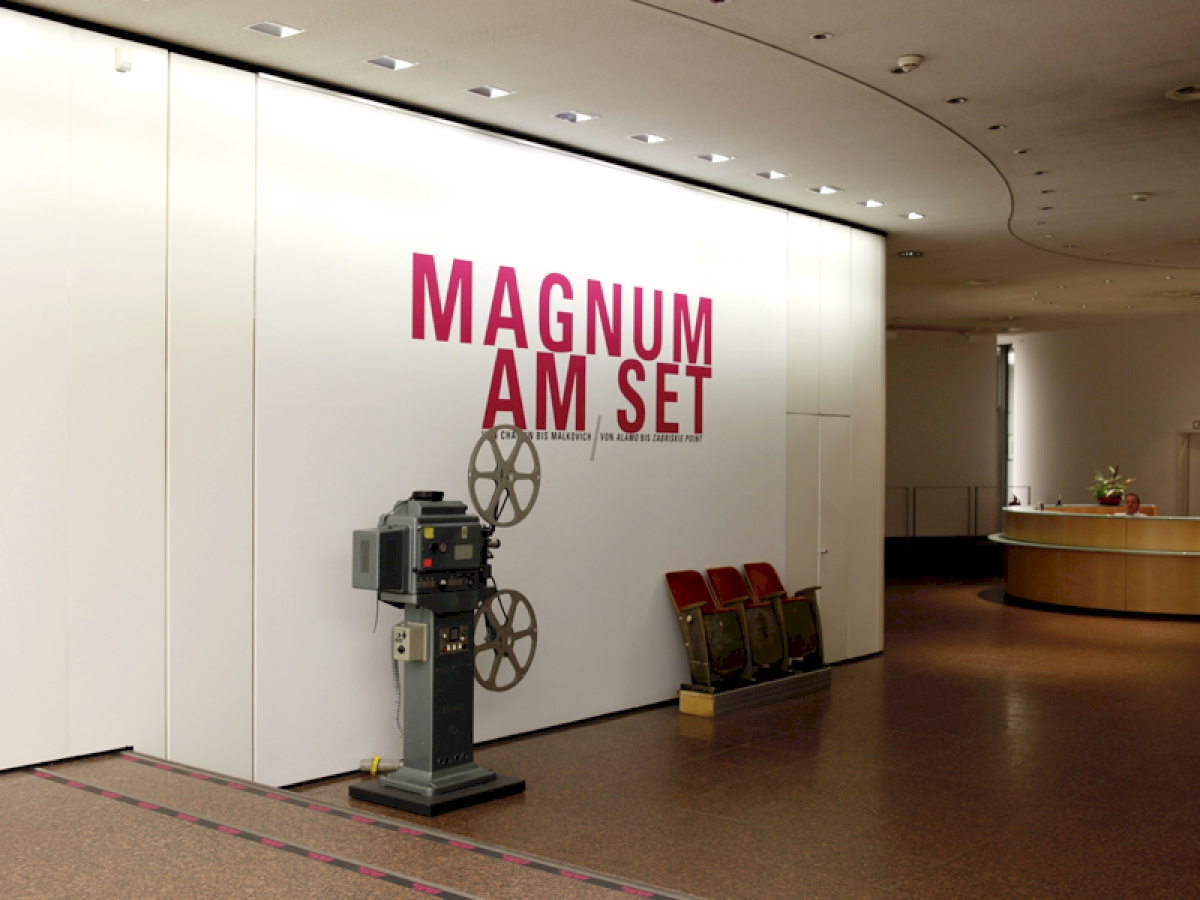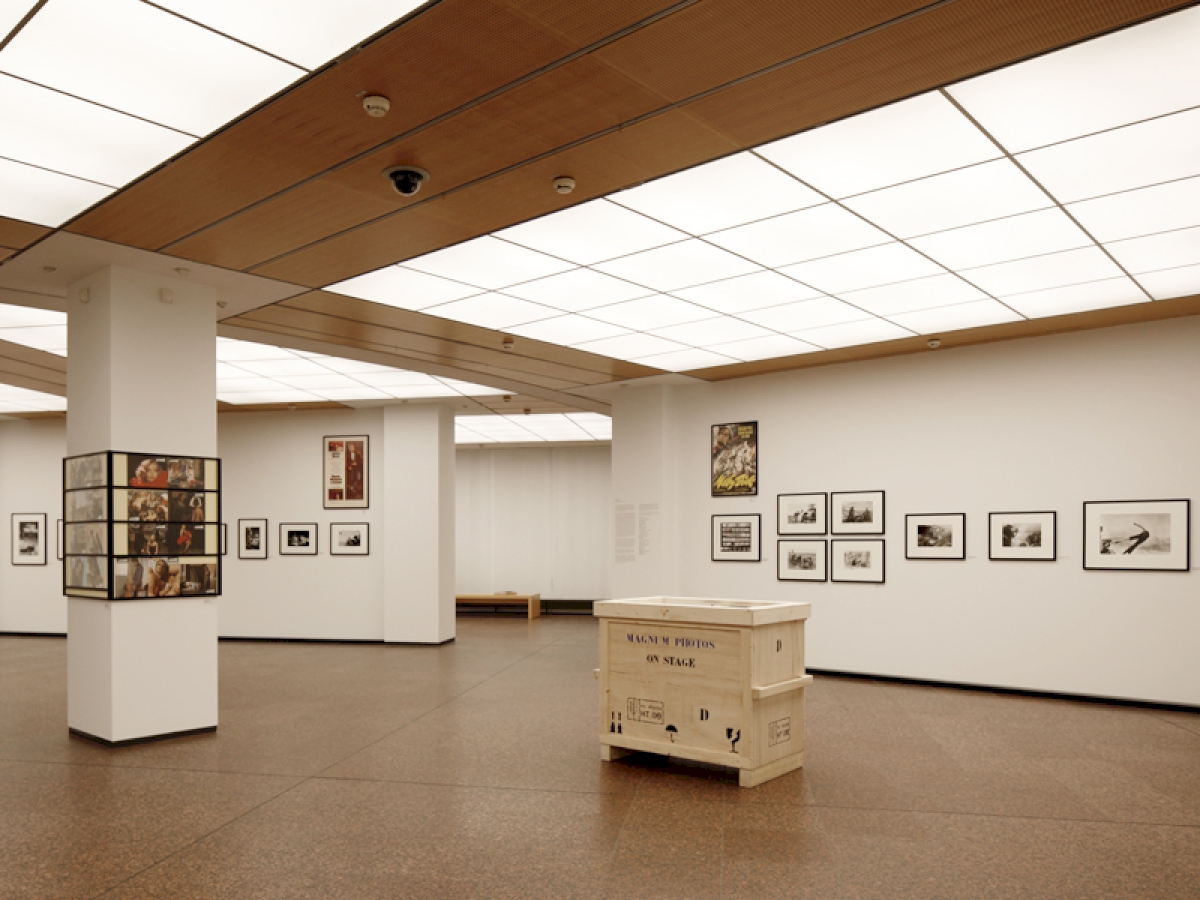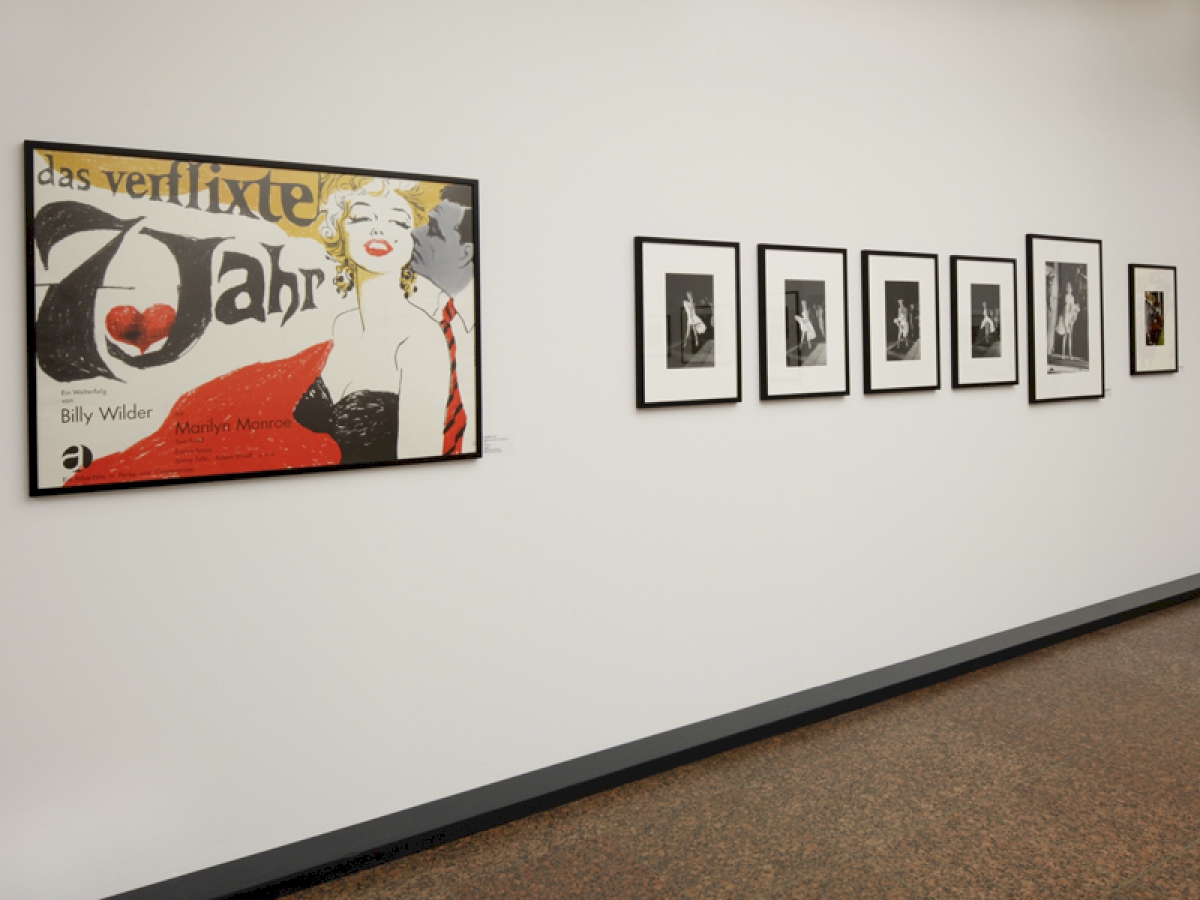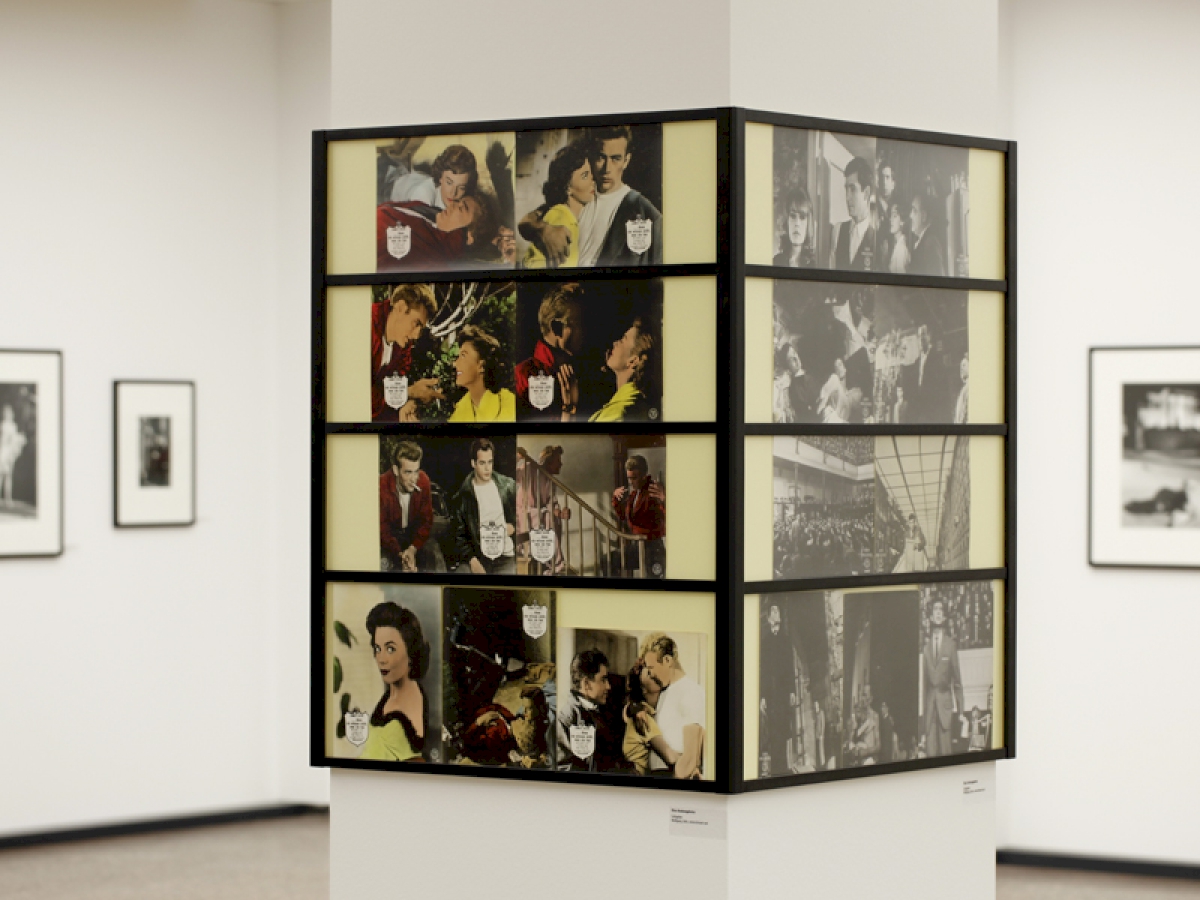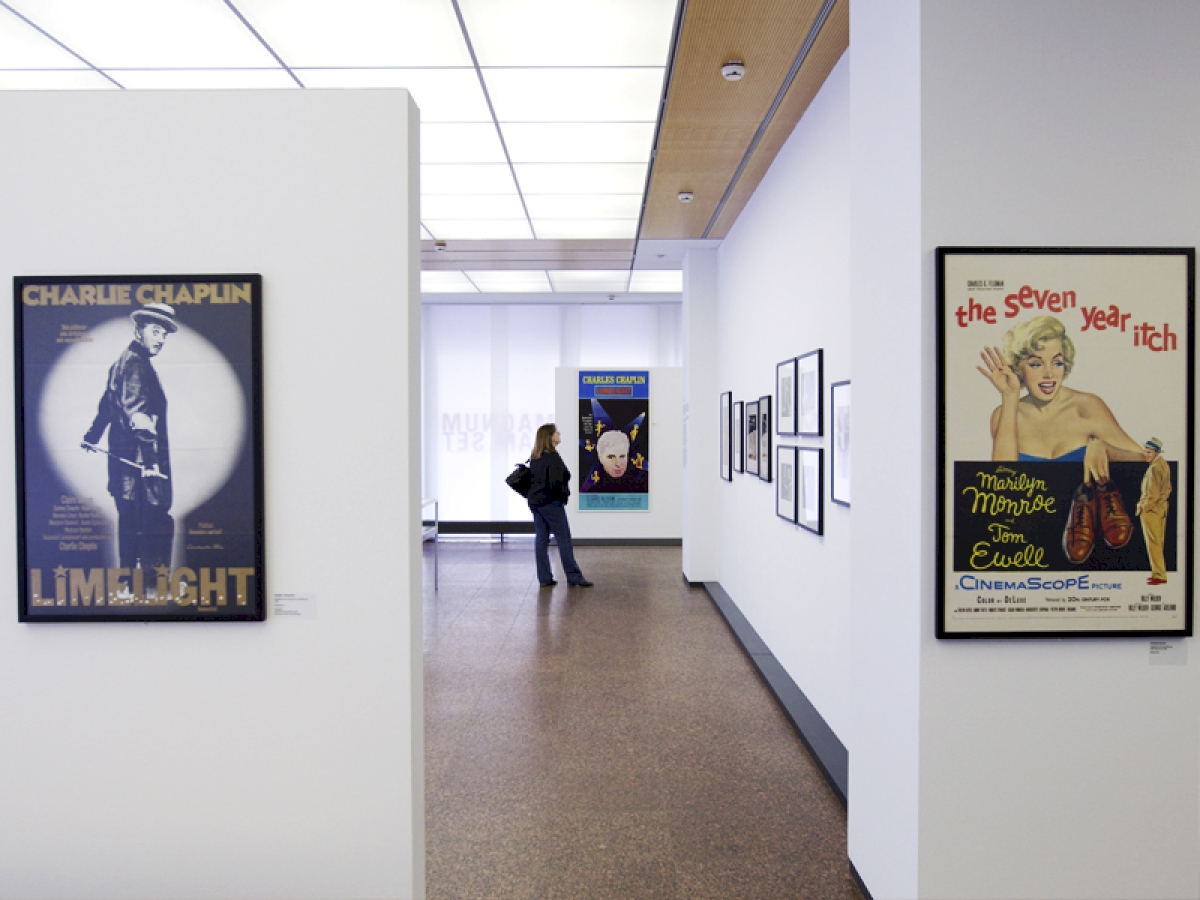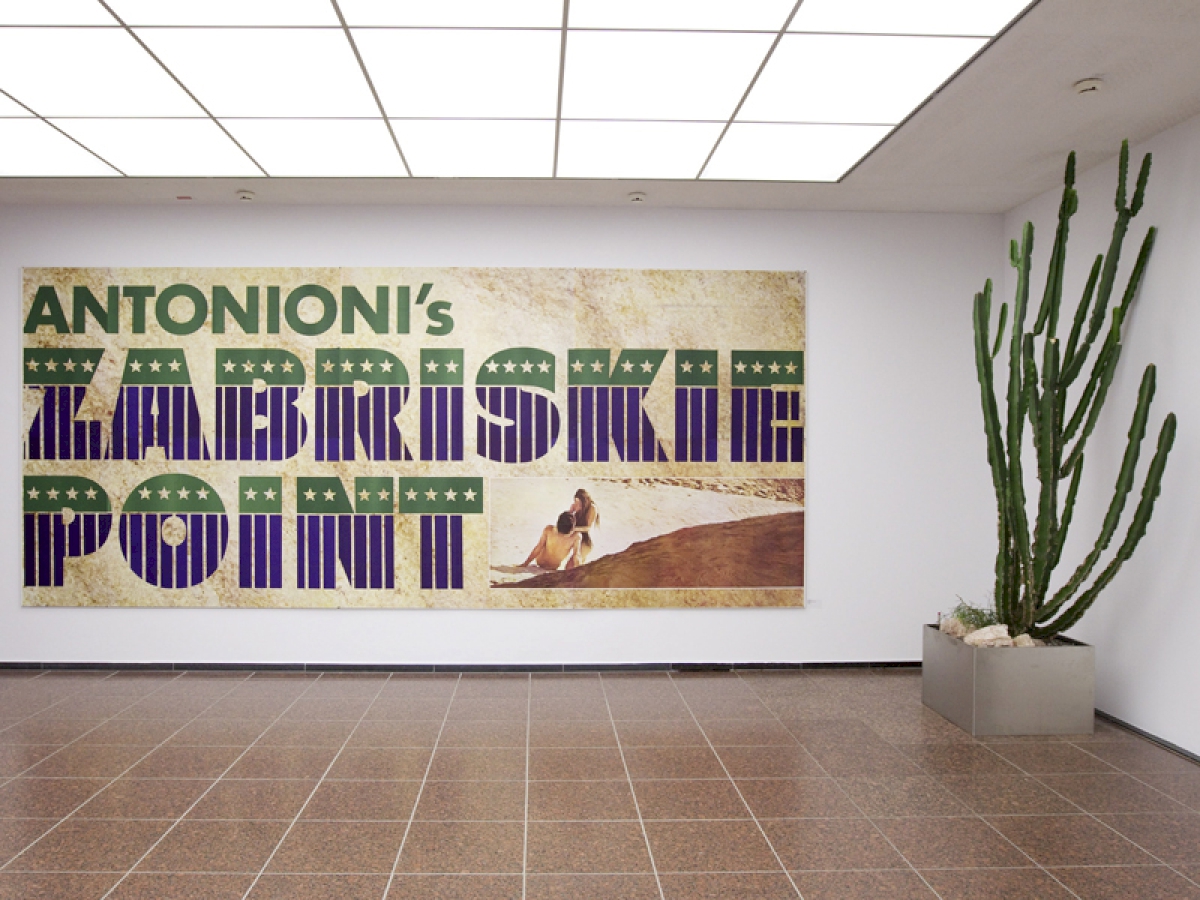Magnum am Set. Von Chaplin bis Malkovich, von Alamo bis Zabriskie Point.
For over one hundred years, an intense relationship has existed between the cinema and photography. The motion picture needs the photograph in order to grab the attention of the real world. All of its beauty and imagination, its art and popularity are inconceivable without the images reproduced in newspapers and periodicals, magazines and books, in show cases and on movie-house facades. It needs the scene still, the star postcard, and the poster. It does not communicate its existence in the movie theater alone: it also depends upon the external visibility generated by photographs.
The legendary Magnum Agency also took on assignments related to set photography. Its members were pioneers of photojournalism. What is less well-known is that they were open-minded towards contemporary motion pictures as well. For Robert Capa, the motion picture and Hollywood’s glamorous society provided a welcome contrast to his previous field of endeavor and to his image as a war photographer, which had clung to him since 1936. It was no mere coincidence that Hungarian-born Endre Friedman had chosen a pseudonym quite similar to the name of movie director Frank Capra. His friendship with John Huston, whom he had met in Naples in 1944, and his affair with Ingrid Bergman (1945/46) lured him to Hollywood and soon opened the doors to the world of the film set for Magnum. The movie industry paid very well for photographs that met the Magnum standard of quality and aesthetics. It was possible to negotiate contracts paying up to $500 per day.
Thanks to their fame as war correspondents, Magnum reporters were held in high esteem. They were well-known to the readers of international publications, especially to the readers of the high-circulation magazines Life and Look. Magnum photographers continued to report from hotspots around the globe, but just as regularly, they also contributed photographs of new movie productions, fashion, and other subjects. They developed into true all-rounders.
From the year of the agency’s founding until the nineties, more than 7,000 photographs of movie sets and stars had accumulated in the Magnum archive. The broad spectrum of this fascinating inventory was first shown during the Magnum Cinéma exhibition held at the Couvent des Cordeliers in Paris in 1994. It was accompanied by an extensive catalog published by Cahiers du Cinéma (France), Phaidon (Great Britain), Schirmer/Mosel (Germany), et al. At that time, up to three representative photographs related to each of the 100 motion pictures covered by Magnum were selected. In 2000 Arthur Miller und Serge Toubiana published The Misfits: Story of a Shoot, which tells the story of the making of the film by way of images taken by the Magnum photographers who covered the production. Magnum had an exclusive contract for the production stills of this movie, which starred such famous actors as Marilyn Monroe, Clark Gable, and Montgomery Clift. In 1960 the by far most vivid testimonials of Magnum’s work on the set were taken during the shooting of this movie, which was accompanied by no less than nine Magnum photographers. These photographs were the subject of the second film-related exhibition to draw from the Magnum archive, which was shown within the framework of the “Mythos Marilyn” exhibition at the Kunstfoyer der Versicherungskammer Bayern in Munich in 2005. The rediscovery of the first-ever exhibition of Magnum photographers from 1955 in the cellar of the Institut Français in Innsbruck in 2007 was accompanied by another unique film-related discovery: the set stills taken by Ernst Haas during the making of Howard Hawks’ Land of the Pharaohs. Inspired by this find, a search for production stills in the Magnum archive ensued.
Magnum photographers had their heyday as still photographers during the fifties and sixties. Their assignments tapered off during the seventies, and they spent less time on the set. They occasionally took portraits of individual stars, but they were gradually replaced by still photographers employed by the film companies, who, unlike Magnum members, do not own their work.
The exhibition “Magnum on the Set” – and the catalog of the same name published by Schirmer/Mosel with texts by Hans Helmut Prinzler– offer a “best of” selection, taken from twelve films that comprehensively illustrates for the first time how Magnum photographers viewed the motion picture world. An in-depth look featuring very personal images of a world that shared much in common with the modus operandi of conventional photography.
The Motion Pictures
Limelight, 1952 / The Seven Year Itch, 1955 / Rebel without a Cause 1955 / Moby Dick, 1956 / Suddenly last Summer, 1959 / The Alamo, 1960 / The Misfits, 1961 / The Trial, 1962 / Planet of the Apes, 1968 / Zabriskie Point, 1970 / L´important c´est d´aimer, 1974 / Death of a Salesman, 1985
The Stars
Charles Chaplin / Montgomery Clift / James Dean / Clark Gable / Katharine Hepburn / Charlton Heston / Dustin Hoffman / Buster Keaton / Klaus Kinski / John Malkovich / Marilyn Monroe / Gregory Peck / Anthony Perkins / Romy Schneider / Elizabeth Taylor / John Wayne / Orson Welles / Natalie Wood
The Photographers
Eve Arnold / Cornell Capa / Henri Cartier-Bresson / Bruce Davidson / Elliott Erwitt / Jean Gaumy / Burt Glinn / Ernst Haas / Erich Hartmann / Erich Lessing / Inge Morath / W. Eugene Smith / Dennis Stock / Nicolas Tikhomiroff
Catalog
MAGNUM AM SET, VON CHAPLIN BIS MALKOVICH, VON ALAMO BIS ZABRISKIE POINT
Edited by Isabel Siben and Andrea Holzherr
with texts by Hans Helmut Prinzler, Schirmer/Mosel Verlag, 2010
Curator
Isabel Siben

